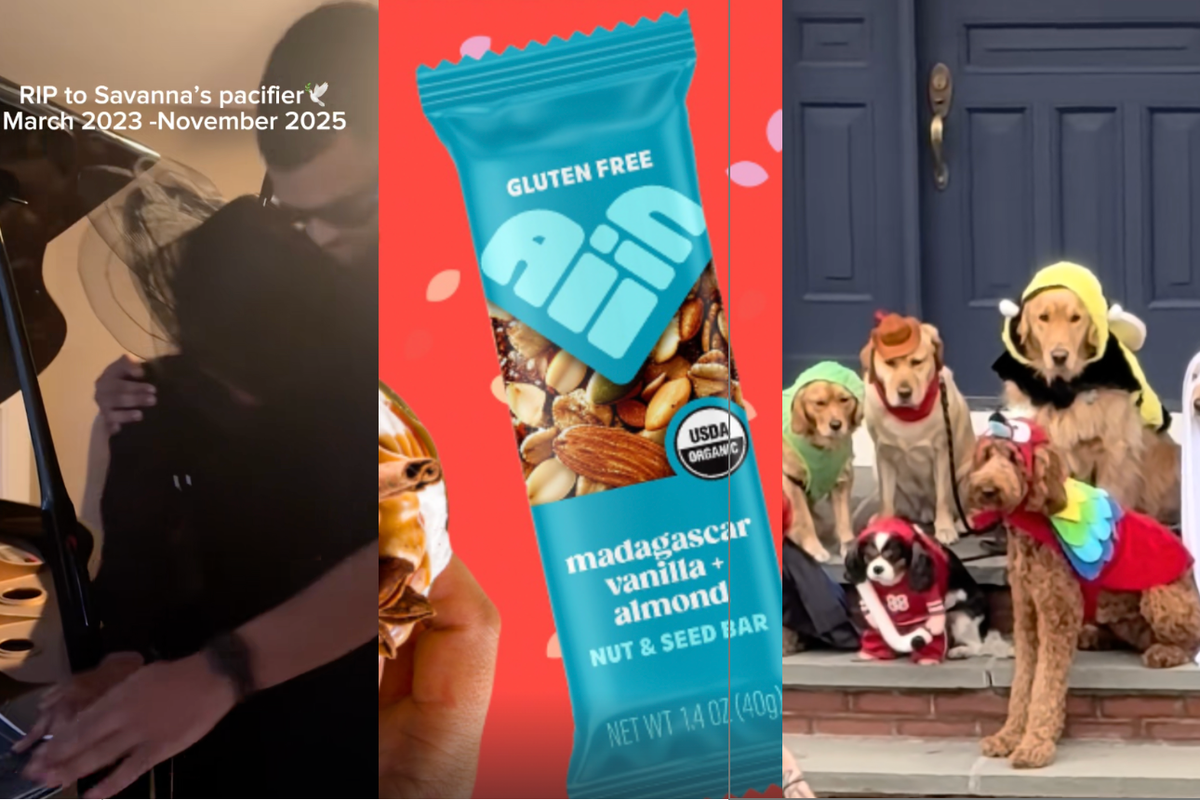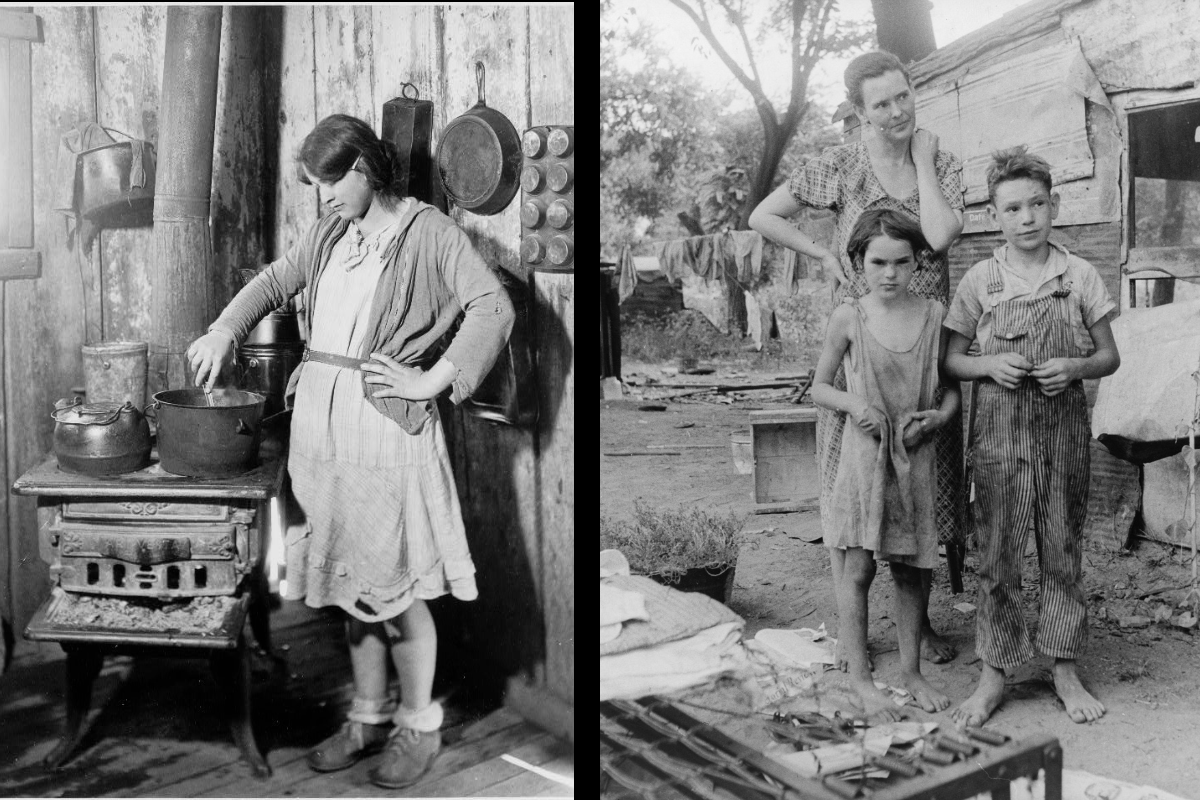
Silhouette romance against a fiery sunset sky.
To be around 56-year-old Ray and Rae Spooner is to be in the presence of a not-so-ordinary couple.
Then again, that's exactly who and what they've always been.
Rae and Ray in their garden.
Long before his successful career; before her job as his full-time caregiver; before the epic, unbelievable cross-country bike ride that would go on to raise thousands of dollars for the Muscular Dystrophy Association and ALS, they were simply Ray and Rae.
Two madly-in-love 23-year-olds who decided they wanted to travel the world together.
Their motto? "Never buy a return ticket."
The adventurers got married for one primary reason: Ray, a native Brit, needed a green card. Their plan was to divorce after one year because both had seen their parents endure painful divorces, and despite their love for one another, each was a bit skeptical of this marriage thing.
That was 1983.
Rae helps Ray get dressed.
They are now 33 years into what Ray playfully calls their "failed divorce" — a marriage happily settled in Urbana, Illinois.
The past three decades have seen Ray bring over 2,000 babies into the world as a beloved male midwife, a rarity in his field. Together he and Rae have three accomplished children, one beautiful grandchild, and a global community of people connecting with them through Ray's blog and the work they have done to raise awareness for ALS, the neurodegenerative disease that affects nerve cells in the brain and spinal cord, causing weakness and eventually paralysis of all voluntary muscles.
Their marriage is proof, in more ways than one, that life doesn't always go as planned.
"People always ask us, 'How do you stay married to someone for that long?' We say we're not married to the same person. We have let each other grow individually and grown together. We have never been planners. We go with the flow and deal with whatever life sends our way."
In 2014, that life philosophy was put to the test.
Ray leans against the wall and hold Rae's hand to get downstairs safely.
While sitting in the hospital as their daughter labored with their soon-to-be-born first grandchild, their son-in-law Cory was tagged in the ALS Ice Bucket Challenge, the viral video phenomenon that asked people to donate money to help find a cure for the disease or pour ice water over their head. Most people did both.
For kicks and to pass the time during a long labor, Cory decided to accept the challenge right then and there. As his wife continued laboring, Ray and Rae poured ice water over Cory at the hospital.
None of them knew much about ALS, but challenged in turn by Cory, days later Ray too had Rae dump a bucket of ice water over his own head — continuing the viral chain to raise awareness for the rare but aggressive disease.
Little did they know that two months later, Ray would be diagnosed with the debilitating disease himself.
When Ray heard the news, he immediately knew what he wanted to do with the rest of his life.
"We're all dying. As much as we're living, we're all going to die. Now I can't say 'When we retire...' Whatever we want to do, we've got to do it now." He calls those must-do's a "f*ck it list" (not a "bucket list" because you don't have to be dying to do what you want to do). And at the top of that list was a cross-country bike trip.
A decorative bicycle hanging in their home.
Ray, an avid rider, had always wanted to do it. But that desire was no longer just about him. Now it had to have a purpose.
Despite the fact that he already had diminished use of one of his arms, he decided that it was the right time for the trip. And he would do it to raise awareness for ALS and the work of MDA, whose local care center (at the same hospital where Ray worked as a midwife) had given them the kind of medical care and support that Rae said "all care should be like."
On Oct. 18, 2015, a small group of friends, neighbors, and of course Rae, began the awareness-building cross-country bike trip with him. They called it "Ray's Little Ride."
The exciting ups and harrowing downs of that ride — three trips to emergency rooms, an accident that left Ray with several broken bones and blood clots, and an outpouring of public support — garnered quite a bit of press and, in turn, a lot of money for MDA. Videos of support from all over poured in, including from children who Ray had helped deliver over his 20-year career.
On Nov. 19, 2015, Ray finished his ride — nonfunctional arm, injuries, and all. And to date, he and the ride have helped raised over $80,000.
Ray out on a bike ride.
Today, Ray can no longer speak and has even less use of his limbs and other muscles.
He communicates now only via text to Rae. She is his primary mouthpiece. To watch them together is to see love in action. No fanfare, no false humility. Just two people who know each other intimately living life together. She can read his every chuckle, eye roll, yawn, and head nod. She intermittently leans over and wipes saliva from his mouth during conversation. The laughter is nonstop.
Rae gives Ray some water.
Rae calls Ray an amateur documentarian. The walls of their home are filled with pictures of their family and memories of their life together thus far. Now, they have graciously allowed photographer Justine Bursoni to come into their life and capture this phase of their journey together. According to Ray:
"It's funny really. To see your life through the eyes of someone else. Initially there were things I didn't want to be documented. But our life isn't a fairy tale. To be true to the whole narrative you have to include the hard to deal with moments. And there are many."
The hardest to deal with part of it all has been thinking about their children.
"I have had 34 years with him." Rae says. "They have not. They are all handling it differently, in their own way."
Ray and his son, Manu, programming what they called "Rayism" into an eye-gaze-operated communication program.
The second hardest part for Rae has been watching the physical deterioration of Ray's body, despite the unchanging brilliance and alertness of his mind.
"'Ray is an incredibly creative person. He's a jeweler by trade. He built a lot of things in our home and he always loved working with his hands. Now he just can't. This beautiful hand, he can't do anything with.' Rae picks up his hand as she says this and gently waves it in the air. 'Each day it deteriorates more and more. That's been the hardest part. I think in my mind, I thought maybe we wouldn't get to this point.'"
Ray wears his wedding ring on his right hand now that his left is completely paralyzed.
"When he was first diagnosed," she says, they looked for the "'Ray Spooner kind of ALS' — the one where you live another 30 years and what has happened to everyone else doesn't happen to you." But it is happening. And they, like their children, are dealing with it in their own unique way. Rae explains:
"On one visit to the clinic they hand me this huge ass book and they say 'Here, this is for the caretaker.' I'm like nooo, that's not for me. We do things the Ray and Rae way. Were we going to follow this guide? No. We were going to do what works for us. For example, our bathroom is still upstairs and we still live in a split-level home. Or, instead of hauling a wheelchair into a van, pushing Ray around and driving to our doctor's appointment, this morning Ray got on his tricycle, and I walked beside him the entire way."
Rae helps Ray onto his trike for an evening bike ride to Meadowbrook Park.
That isn't to say they don't need help. The importance of accepting and asking for help has been one of their greatest lessons. Nowadays, their house is often full of friends and visitors — everyone willing to pick up a rag or a cup or do whatever they can to help. And that has been their greatest surprise of the journey: just how much people care and are willing to help. Ray reflects on this:
"Initially I think there is a tendency on both the part of the person with the disease and their caregiver to think 'OK, we got this.' But time will come when you will have exhausted all your physical and psychological faculties. Take names. Take numbers. Don't be afraid to pick up the phone. It takes a tribe."
Their daughter, Sophia, wipes the saliva from Ray's mouth as they all enjoy the company of former co-workers on their patio.
But at the core of their tribe is each other.
"This isn't about one partner or family member putting their life on hold to help care for the other. It's about a partnership moving into the next phase of life together," Ray says, speaking about what many see as his wife's "sacrifice."
"One day Rae asked me, 'How will I know you’re still with me?' While the question surprised me, I did have an answer. But when I tried to verbalize a response, I couldn’t get the words out. The thought that one of us would not be with the other had never really occurred to me. But if one of us is not there physically, the essence of that person remains embedded within the person whose life you shared. So, really, how can we ever not be together?"
Ray now wears a BiPAP to bed. Here, he works with Rae to calm down from a panic attack.
He continues,"I’ve been making movies as gifts for various birthdays in the future for Rae when I’m not around. Rae says I’m her memory so each mini movie is about a certain time or event in our life. I'm up to her 64th birthday. I've also made wedding/housewarming gifts for each of the kids. A book for Rae chronicling our 34 years together (its over 600 pages). A message for Jack on his bar mitzvah. You get the idea."
"Planning for the inevitable is my drug of choice. It may not work for everyone, but it's how I get through. When you're initially diagnosed everyone sends you info about therapy and miracle treatments. But as I said, preparation is my therapy. Fairly early on I decided not to spend my time chasing more time. I'm spending my time spending my time. Making sure that Rae knows I will always be with her."
Rae and Ray look in the mirror and embrace in a similar fashion, as they did for a photo taken years ago.
Ray jokes with Rae about her writing an advice book someday. It would be called, "Things You Need to Know Before You Have to Wipe Your Partner's Ass." They both laugh hysterically when she says this, but there's power in the underlying message. True love at its best requires service.
He continues to blog about his life at Ray's Little Ride.
There, he gives a raw, humorous, and poignant take on life as he knows it — not just living with ALS but the universally human experience of trying to live life as it's meant to be lived.
"Whether we have a disease or not, there is a number to our days. There is risk inherent in walking out the door in the morning. But ALS has given me an opportunity. To not leave things undone or unsaid. That is a gift."
And that's what both Ray and Rae are focused on appreciating. With their blog and their breathtaking photos, they have laid their life bare for the world to see. And he says confidently that he would do it all over again, just to know that he is helping someone.
Rae helps Ray out the back door of their home.





 Team meeting chaos: one employee silently pleads for help.
Team meeting chaos: one employee silently pleads for help. Overcoming fears: Shadow looms large, but courage stands firm.
Overcoming fears: Shadow looms large, but courage stands firm. Confused expression against a bright yellow background.
Confused expression against a bright yellow background.
 Stayin Alive GIF by Bee Gees
Stayin Alive GIF by Bee Gees 
 BabyCenter's Top 10 baby names for 2025.Canva
BabyCenter's Top 10 baby names for 2025.Canva The name Luca has seen a rise in popularity.
The name Luca has seen a rise in popularity.  Susannah has climbed over 3,000 spots on the baby name chart.
Susannah has climbed over 3,000 spots on the baby name chart.  Pope Francis passed away in April 2025.
Pope Francis passed away in April 2025.  How do you choose a name for a brand new human?
How do you choose a name for a brand new human? 
 Never good when the HOA President comes knocking.
Never good when the HOA President comes knocking.  Kids should be able to play outside; but how strictly should we regulate them? Photo by
Kids should be able to play outside; but how strictly should we regulate them? Photo by